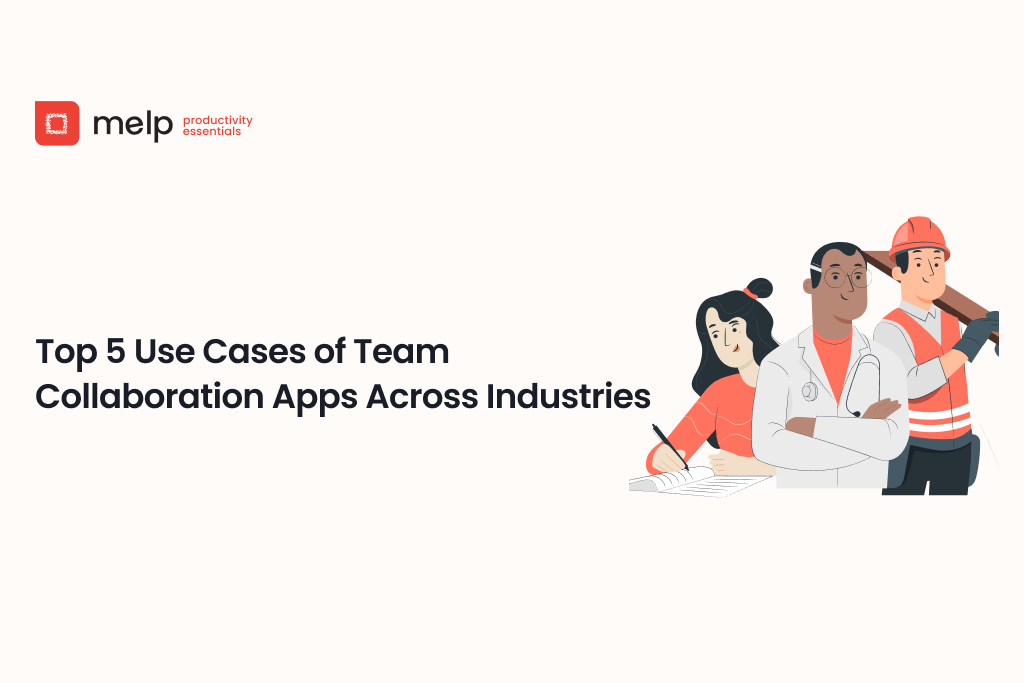
When teams work together, things move faster. But in many industries, communication still feels stuck—too many emails, missed messages, and people not being on the same page. That’s why a growing number of businesses are turning to tools that make talking, planning, and sharing easier.
A team collaboration app gives everyone a central space to stay connected, whether they’re at a desk, on the job site, or checking in from home. But how these apps are used can look very different depending on the kind of work you do.
Here are five real-world ways these tools are helping teams across industries get things done.
1. Healthcare: Better Handoffs Between Shifts
In hospitals and clinics, teams don’t work 9 to 5. There are always people coming and going—nurses, doctors, lab techs, specialists—and they all need to stay updated about patient care.
That’s where communication can break down. A note left on a clipboard doesn’t always get seen. An email might get buried.
With a collaboration app, departments like ER, ICU, or surgery can each have their own group. Shift updates, patient notes, lab results—everything can be shared in real time, where it won’t be missed.
Let’s say a nurse sees a change in a patient’s vitals during the night. Instead of hoping the morning nurse finds the note, they just post it in the group. That nurse sees it right away and knows what to look for when they check in.
It makes a small but important difference—better care, fewer errors, and a more connected team.
2. Construction: Keeping Field and Office in Sync
On a job site, you’ve got crews working in different spots, deliveries showing up, inspections being scheduled—and a lot of chances for details to get lost.
The crew on-site can’t afford to wait for emails. The office team needs updates without calling five people. A collaboration app helps everyone stay in touch without slowing down.
Say a worker spots a problem with the foundation. They snap a photo and send it in the group. The engineer sees it and shares a solution. The site manager adjusts the schedule, and materials get ordered—all without stepping away from the job.
When everyone can talk in real time, you save hours of delay and thousands in costs.
3. Education: Helping Teachers Stay on the Same Page
Schools are full of moving parts—lessons to plan, parents to update, and events to coordinate. And while emails help, they can’t match the speed of a quick message or shared calendar.
With a team collaboration app, teachers can set up groups for grade levels, departments, or school-wide communication. Planning a science fair? One group. Need a sub for tomorrow? Post it, and someone might reply in minutes.
Let’s say weather causes a last-minute change to the testing schedule. Instead of calling or emailing everyone, the principal just posts it in the school-wide channel. Teachers see it, adjust their lessons, and pass it on.
It reduces confusion, saves time, and lets teachers focus on teaching.
4. Creative and Marketing Teams: Managing Projects Without the Chaos
Creative teams often juggle multiple projects—blogs, designs, ads, videos—and getting feedback or approvals can drag things down.
With a team app, everyone involved in a project can see the same files, ask questions, and give input. It cuts down the back-and-forth, keeps things moving, and makes sure nothing slips through.
For example, a graphic designer shares a new layout in the chat. The writer suggests a headline change. The manager approves it. No waiting for replies or digging through email threads.
The work gets done faster, and it’s easier for everyone to stay in the loop.
5. IT and Tech Support: Responding Faster, Solving Smarter
Tech problems don’t follow a schedule. A system goes down. Someone forgets a password. A customer can’t access their account. The faster your IT team can respond, the better things run.
That’s where a collaboration app helps. Instead of opening tickets and waiting, people post issues in the right group. Tech support sees it, replies, and keeps others informed along the way.
Let’s say the payment system goes offline. The finance team flags it in the chat. IT jumps in, checks logs, and shares an update. While they work, support notifies the rest of the company so they don’t get flooded with questions.
No more guessing who knows what. Everyone stays informed—and that builds trust.
Final Thoughts
No matter your industry, teams need to talk, share, and solve problems together. When you don’t have a reliable way to communicate, you waste time, repeat work, and miss important details.
A good team collaboration app keeps things clear and simple. It helps doctors coordinate care, teachers plan faster, builders fix problems, and tech teams act fast. The job gets done, and people work better together.
If your team is still stuck juggling messages across emails, chats, and calls, it might be time to try a better way.
Work Better Together — Try Melp
Melp is built for real teams that want to move faster and stay connected. Whether you’re running a hospital, teaching a class, managing a site, or launching a campaign, Melp keeps everyone aligned and informed.
Try Melp today and make teamwork easier